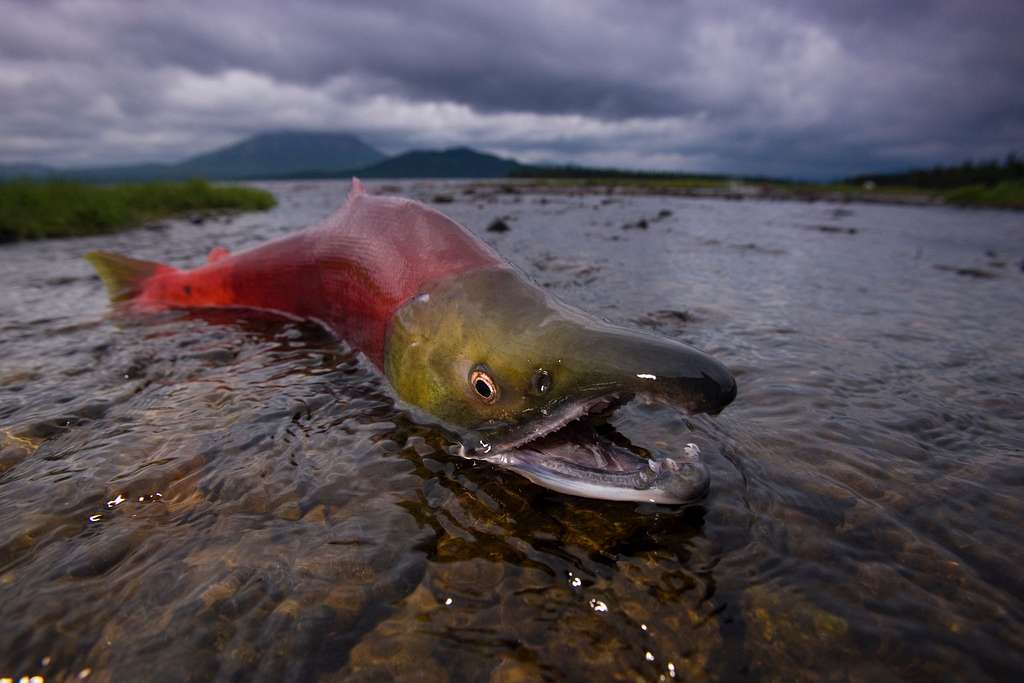Salmon reared in National Forests are an important food source for Alaskans

Salmon is a staple on the table of many Alaskans, but what role do our national forests play in providing essential habitat for this valuable economic, cultural, and recreational resource?
ACRC research technician Emily Whitney and affiliates Ryan Bellmore at the USDA Forest Service Pacific Northwest (PNW) Research Station, Stormy Haught with the Alaska Department of Fish and Game, and Di Johnson are working to quantify the number of “forest fish” originating from Alaska’s National Forestlands in the last decade.
This project builds on the work of a 2019 study led by Johnson and Bellmore that put a dollar value on the contribution of National Forest salmon to Alaska’s commercial fish industry. The study found that the Tongass and Chugach National Forests produced an average of 48 million of the Pacific salmon that were commercially caught annually from 2007 to 2016, equalling nearly 90 million dollars in commercial value.
To expand this work, Whitney has led an effort to quantify the number of fish reared in the Tongass and Chugach National Forests that find their way into sport, personal use, and subsistence fisheries in Southeast Alaska by compiling data from state and federal databases, sport fishing reporting, and subsistence harvest data.
From 2011 to 2020, an average of over 250 thousand fish caught across sport, personal use, and subsistence fisheries came from the Tongass National Forest, and the Chugach national forest contributed an average of 450 thousand fish annually to these fisheries.
Whitney and her collaborators sought to quantify the significance of forest fish as a food source for Alaskans by defining the number of servings of salmon per year that originate within the boundaries of the Tongass and Chugach. The researchers assumed a 6-ounce serving to estimate the quantity of salmon consumption in Alaska.
In the Tongass, forest fish make up 1.7 million pounds of fish caught for sport, subsistence use, and recreational use, which represents 2.7 million six-ounce servings of salmon per year.In the Chugach, forest fish make up about 2.7 million pounds of fish caught yearly, translating to about 3.8 million servings per year.
“When you look at the value of these fish and how they fill freezers, a sport-caught fish can feed a family just as well as a subsistence-caught fish, so it’s important to recognize the value to each of them,” said Whitney.
In the future, the researchers may address how to attach an economic value to salmon from National Forests, but when you factor in indirect benefits related to fishing, tourism, and subsistence, assessing the total value of forest fish can quickly become complex.
“Do forest fish bring just food value? When people go out to fish, they spend money on boat fuel, boat maintenance, and supplies at the marina grocery store. There are all these connections that are relevant but perhaps challenging to untangle,” said Whitney.
As habitat for a significant portion of Alaska’s salmon population, National Forests provide a valuable ecosystem service. How we can manage these forests to benefit forest fish, support fisheries, and ultimately support communities will become increasingly important in a changing climate.